Exploring Lisbon’s Alfama District
I explored Lisbon’s Alfama district which is the really old town of Lisbon that remained intact despite a series of major quakes in the area that devasted a large portion of the city.
I explored most of the Alfama on my own and then taking a group walking tour to get more familiar with the history, main attractions and landmarks, gorgeous views and the many fado houses that feature this unique music, song and dance in the area.
The Alfama is fascinating and fun to explore even if you just walk around on your own, take in the views and enjoy the many attractions here to explore in the Old town of Lisbon. Here’s what you can check out below.

Exploring Lisbon’s Alfama – Haunting Fado, a striking cathedral, historic Moorish fortress and stunning views
You can easily walk through the Alfama and discover the many fantastic and historic attractions like the cathedral and the impressive fortress, along with the wonderful miradors or views out to the river area and panoramic views above the city. We detail all the main places to visit on your own or even take a walking tour of the area to learn more about the unique and hidden stories and places of interest around the historic old town.
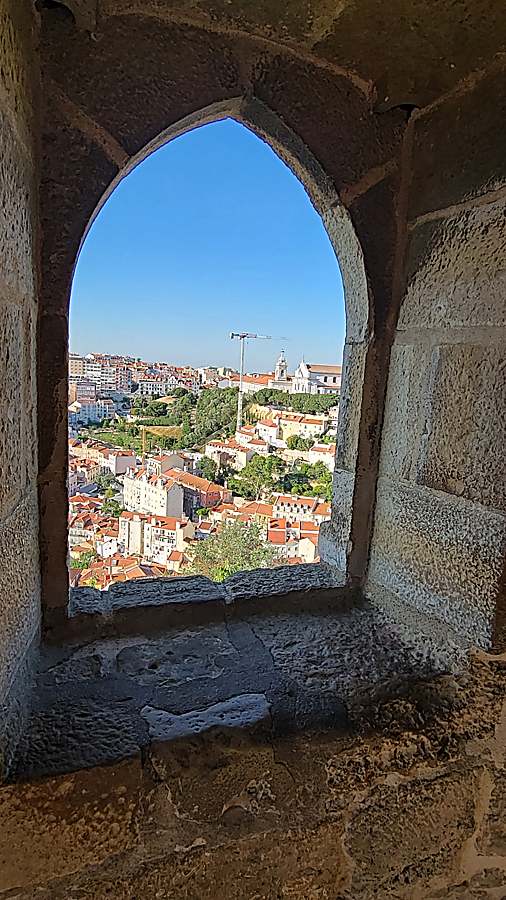
Why visit the Alfama District
Lisbon’s Alfama District is worth visiting for its irresistible blend of history, culture, and lived-in charm, where winding medieval lanes, sun-washed façades, and traditional Fado houses create an atmosphere unlike anywhere else in the city. As Lisbon’s oldest neighborhood, it offers unforgettable views from miradouros like Portas do Sol, alongside ancient landmarks such as the Sé Cathedral and Castelo de São Jorge. Yet what truly makes Alfama special is its authenticity—locals chatting from balconies, hidden courtyards, family-run tavernas, and the gentle rhythm of daily life that fills every corner. It’s a place to wander slowly, savoring the soul of Lisbon one cobblestone at a time.
Even though the area is a popular tourist venue, the back streets and other quiet parts of the Alfama district are lived in by local residents and fun to explore the many sites that are still off the beaten path in the area.

How to get around the Alfama District
Getting around the Alfama District is best done on foot, as its narrow, maze-like streets and steep hills are often inaccessible to cars but perfect for slow wandering and discovery. Comfortable shoes are essential, since many lanes are cobblestoned and winding, with occasional stairways connecting different levels of the neighborhood. While walking is the most rewarding way to explore, you can also use the iconic Tram 28, which passes along the edge of Alfama and offers a scenic ride through some of Lisbon’s historic quarters. Tuk-tuks and taxis can reach the main roads and viewpoints, but the true charm of Alfama lies in navigating its pedestrian-friendly passages, allowing you to stumble upon hidden squares, local shops, and spontaneous miradouros along the way.
Travel by tram
The main tram line to reach the Alfama District is the famous Tram 28, which is the most iconic and convenient route for accessing the neighborhood. This classic yellow tram winds its way from Martim Moniz through Graça, São Vicente, and past the Lisbon Cathedral (Sé), skirting much of Alfama before continuing toward Estrela. It’s both a practical way to arrive and a scenic experience in itself. Additionally, Tram 12 offers a shorter circular route beginning in Martim Moniz and passing close to Alfama’s upper areas, making it a less crowded but still charming alternative. Both lines give you easy access to Alfama’s viewpoints and entry points, from which you can explore the labyrinth of streets on foot.
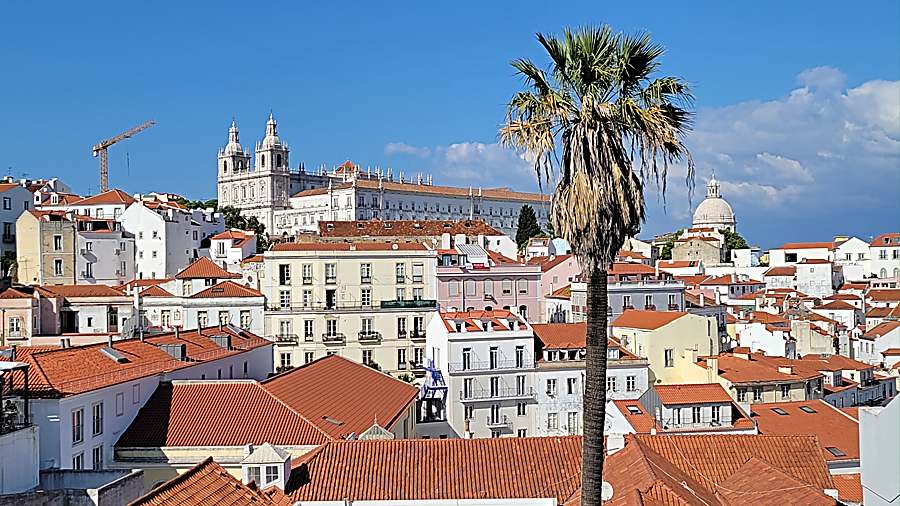
Explore these historic sites, views and attractions of the Alfama
Here’s an outline highlighting key historic sites, viewpoints, and attractions to explore in the Alfama District:
I. Historic Landmarks

- Sé de Lisboa (Lisbon Cathedral) – Oldest church in the city; Romanesque architecture and peaceful cloister.
Sé de Lisboa, also known as the Lisbon Cathedral, is the city’s oldest and most iconic religious monument, standing proudly since the 12th century. Built shortly after the Christian reconquest, its sturdy Romanesque façade—with twin bell towers and a fortress-like presence—sets the tone for the layers of history found inside. Visitors can admire Gothic chapels, centuries-old cloisters revealing archaeological traces from Roman, Moorish, and medieval periods, and a treasury displaying precious liturgical artifacts. Despite surviving multiple earthquakes, the cathedral remains one of Lisbon’s most atmospheric landmarks—a place where architecture, spirituality, and history converge in the heart of the Alfama district.
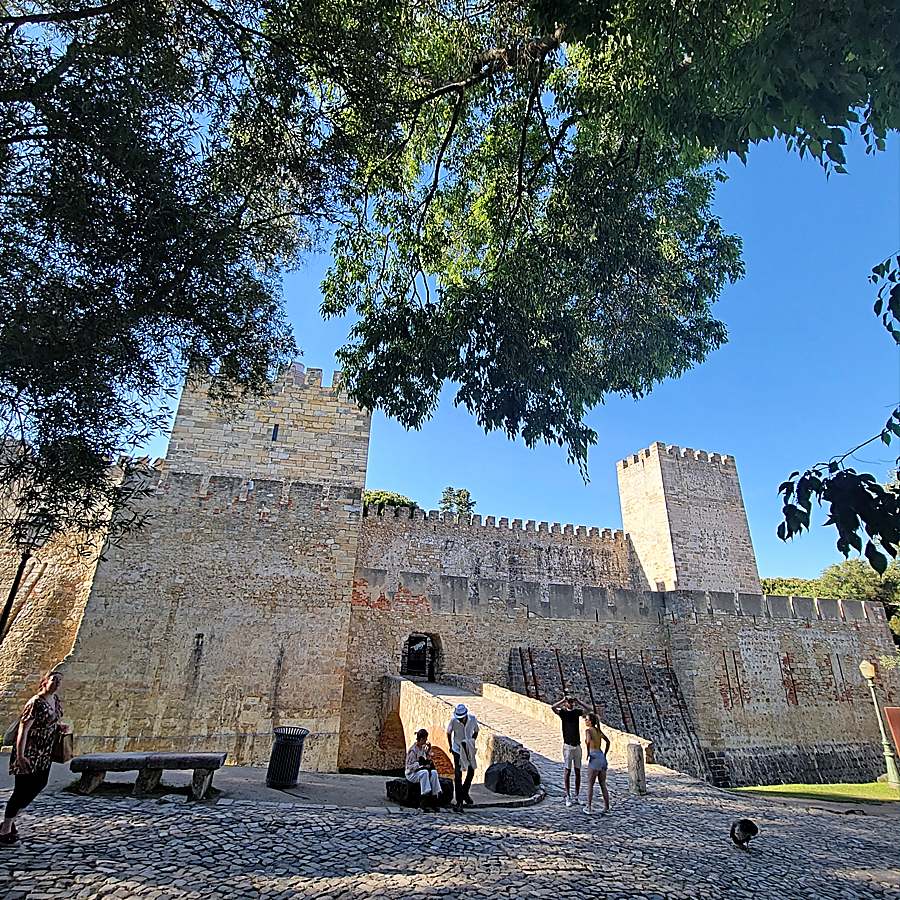
- Castelo de São Jorge – Hilltop fortress offering panoramic views and archaeological ruins.
Castelo de São Jorge crowns Lisbon’s highest hill, offering commanding views over the city and the Tagus River while preserving centuries of Portuguese history. Originally a Moorish fortification, it was captured by Afonso I in the 12th century and later expanded into a royal residence. Today, its imposing walls, dramatic battlements, and winding paths evoke the feel of a medieval stronghold, while archaeological sites showcase layers of Roman, Moorish, and early Christian occupation. Visitors can wander through leafy courtyards, explore restored towers, and enjoy panoramic viewpoints that make the castle one of Lisbon’s most memorable and scenic landmarks.
- Igreja de Santo António – Church dedicated to Saint Anthony, near the cathedral.
The Igreja de Santo António, located just steps from Lisbon’s iconic Sé Cathedral, is a charming Baroque church dedicated to Saint Anthony, who is believed to have been born on this very site. Rebuilt in the 18th century after the 1755 earthquake, the church features an elegant façade of pale stone and a warm, intimate interior adorned with azulejos depicting scenes from the saint’s life. Its small underground crypt—said to mark the location of Saint Anthony’s birthplace—adds an extra layer of historical significance. Today, the church remains an important pilgrimage spot and a peaceful stop for visitors exploring the Alfama district.

- Panteão Nacional (National Pantheon) – Monumental domed church and resting place of notable Portuguese figures.
Visiting the Panteão Nacional (National Pantheon) is a memorable experience that blends striking architecture with Portugal’s cultural heritage. Housed in the grand, white-domed Church of Santa Engrácia, the monument impresses with its vast marble interior, soaring arches, and ornate details that echo centuries of craftsmanship. As you explore, you’ll find the tombs and cenotaphs of notable Portuguese figures, including writers, presidents, and fado legend Amália Rodrigues. The highlight is climbing to the panoramic terrace, where sweeping views unfold over the Alfama rooftops, the Tagus River, and the Feira da Ladra market below. The Pantheon offers both quiet reflection and breathtaking scenery, making it a standout stop in Lisbon.

- São Vicente de Fora Monastery – Impressive monastery with ornate tiles, cloisters, and rooftop views.
Visiting the São Vicente de Fora Monastery offers a serene and enriching escape into one of Lisbon’s most impressive religious and historical landmarks. This 16th-century monastery, set just above the Alfama district, captivates with its graceful Mannerist architecture, tranquil cloisters, and beautifully tiled corridors, including an extraordinary collection of 18th-century azulejos that illustrate scenes from La Fontaine’s fables. As you explore, you’ll encounter the royal pantheon of the Braganza dynasty and climb to a rooftop terrace that rewards you with sweeping views over the city and the Tagus River. The combination of art, history, and panoramic vistas makes a visit both inspiring and unforgettably picturesque.
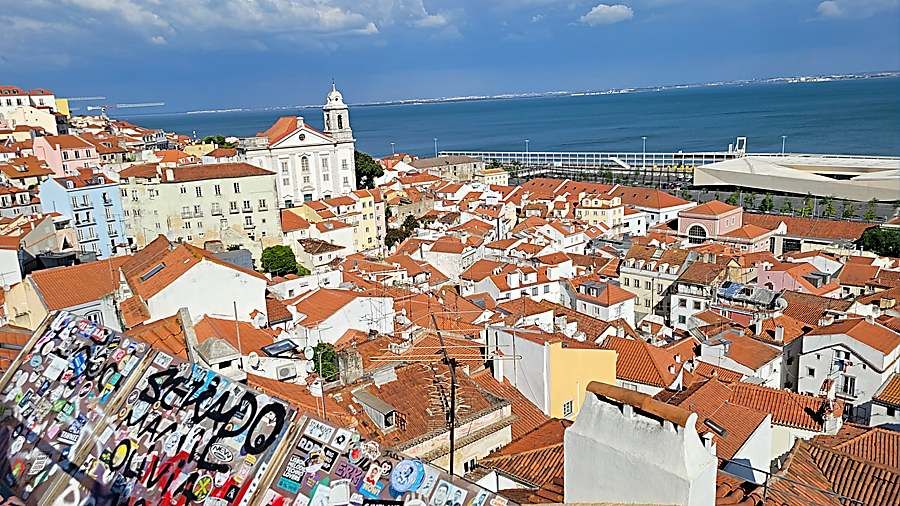
II. Viewpoints (Miradouros)
Visiting the viewpoints (miradouros) of Alfama is one of the most rewarding ways to soak in the essence of Lisbon’s oldest district. Scattered along the hillside, spots like Miradouro de Santa Luzia, Miradouro das Portas do Sol, and the terraces near the Castelo de São Jorge offer sweeping panoramas of terracotta rooftops, church spires, and the shimmering Tagus River. Each viewpoint has its own character—Santa Luzia is romantic with its azulejo-covered walls and bougainvillea, while Portas do Sol feels grand and expansive, perfect for sunrise or leisurely photos. As you wander between them, you’ll enjoy quiet lanes, local cafés, and glimpses of daily Alfama life. Together, these miradouros create a beautiful, layered experience that captures Lisbon’s charm from above.
- Miradouro de Santa Luzia – One of Lisbon’s most picturesque terraces with tile panels and views over Alfama’s rooftops.
- Miradouro das Portas do Sol – Wide viewing platform overlooking the Tagus River and pastel-colored houses.
- Miradouro da Graça – Slightly uphill from Alfama; offers broad sunset views of Lisbon’s historic core.

III. Cultural Attractions
The cultural attractions of Alfama reveal the heart and soul of Lisbon, blending centuries-old traditions with vibrant local life. Visitors can explore historic landmarks such as the Sé Cathedral, the National Pantheon, and the São Vicente de Fora Monastery, each offering architectural beauty and deep historical significance. Alfama is also one of the best places to experience Fado, with intimate casas de fado where soulful music fills the narrow, lantern-lit streets. Local museums—like the Museu do Fado—celebrate the neighborhood’s artistic heritage, while colorful azulejos, hidden artisan workshops, and lively community festivals showcase its enduring cultural spirit. Wandering through Alfama feels like stepping into a living tapestry of Lisbon’s past and present.
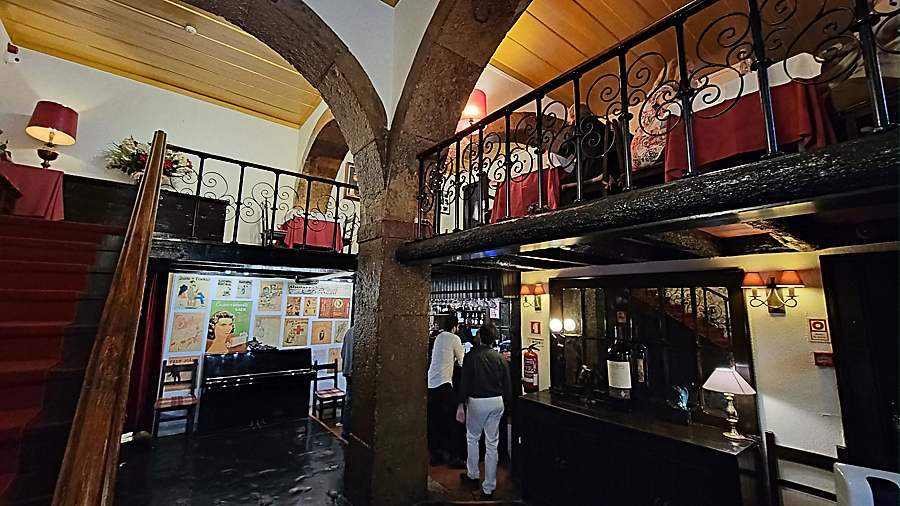
- Fado Restaurants and Houses – Traditional venues where you can hear live Fado music in intimate settings.
- Fado Museum – Exhibits exploring the origins and evolution of Portugal’s soulful musical tradition.
- Local Artisan Shops – Ceramics, tiles, crafts, and small ateliers scattered throughout alleyways.
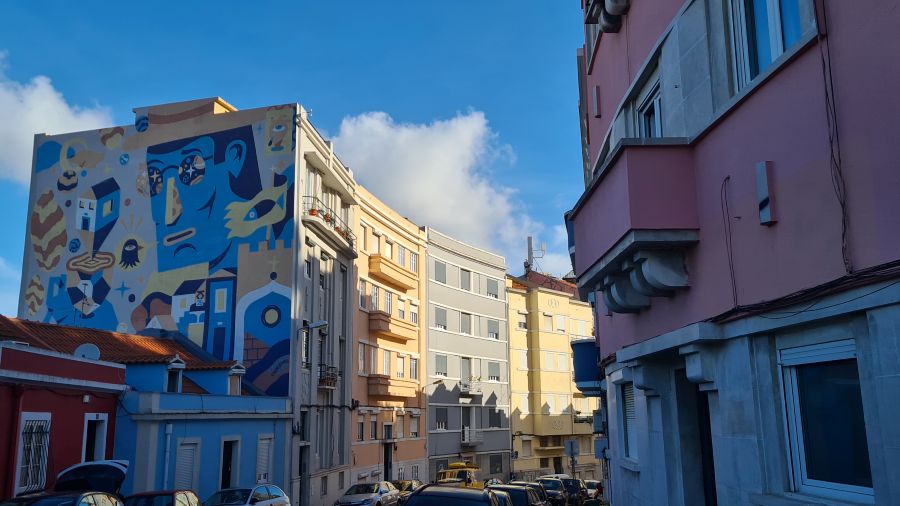
IV. Streets and Neighborhood Gems
- Rua dos Remédios & Rua de São Pedro – Lively pedestrian lanes filled with cafés and small shops.
- Alfama’s Hidden Courtyards – Quiet squares like Largo do Chafariz de Dentro offering local character.
- Feira da Ladra (Flea Market) – Historic open-air market held near the Pantheon on Tuesdays and Saturdays.

V. Waterfront and Surroundings
- Campo das Cebolas & Ribeira District – Lower Alfama areas connecting to the riverfront promenade.
- Tagus River Views – Scenic vistas from multiple paths leading down toward the water.
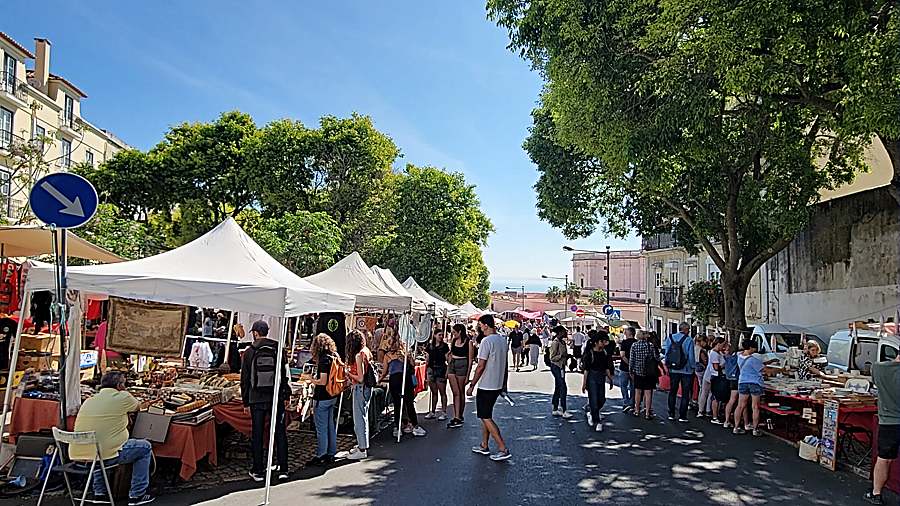
Take a guided tour of the Alfama
If you want to learn more about the area and find all those hidden and unique places to visit in the Alfama, I recommend taking a walking tour. Here are some of the suggest outfitters with highlights of what you’ll see and do.
Lisbon: Food and Wine Small Group Walking Tour
Conclusion to visiting the Alfama District
Visiting the Alfama District is like stepping into the soul of Lisbon—an intimate blend of ancient streets, soulful fado melodies, sweeping viewpoints, and vibrant local life that feels both timeless and welcoming. Its layered history, lived-in charm, and sensory richness make it one of the most rewarding neighborhoods to explore, whether you’re wandering its alleys, riding the tram, or soaking in panoramic sunsets from a miradouro. If you’re planning a trip to Lisbon, make sure to carve out time for Alfama—slow down, get a little lost, and let its magic unfold. Start mapping your route today and discover why this beloved district captures the hearts of travelers from around the world.

About author – Noel Morata
After relocating from the United States to Andalusia in 2024, I’ve made it my mission to discover every corner of Spain along with many Mediterranean locations, cities and attractions. Based just east of Granada, I’ve spent a lot of time visiting Lisbon and around Portugal including multiple extended visits to the Algarve region, Sintra, Caiscais and the middle parts of the country throughout different seasons. My background in history cultural studies and years of residence and exploring all of the Mediterranean countries have given me unique insight into the region’s historical significance, local customs, and culinary traditions.
Lisbon is a wonderful city to explore and filled with many historic treasures, sites and views and the Alfama district is a must visit to the old town and key landmarks that distinguish the historic parts of the city and stunning views from the various miradors.
I regularly update my guides with the latest information gathered through personal visits and relationships with local tourism officials, always seeking what’s new and exciting in each destination. As a self-proclaimed foodie, I’m passionate about discovering authentic local markets and regional specialties.


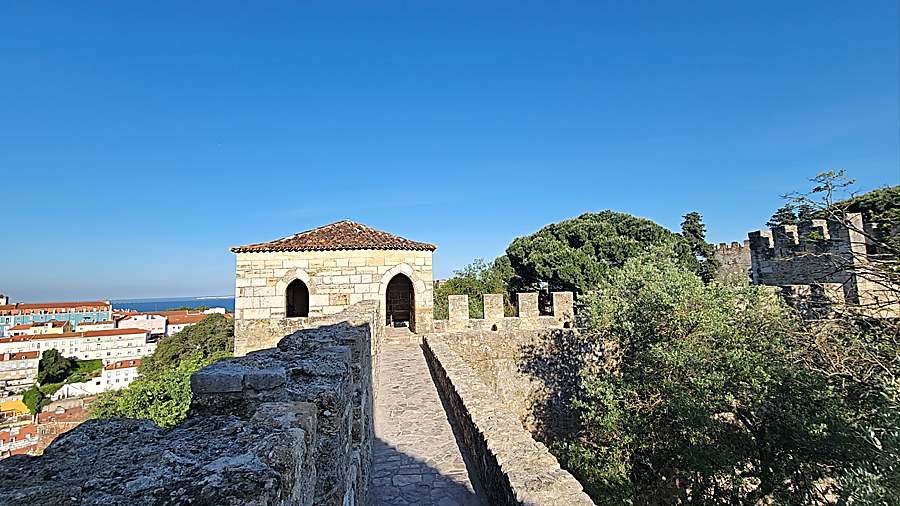
1 thought on “Lisbon Alfama District”